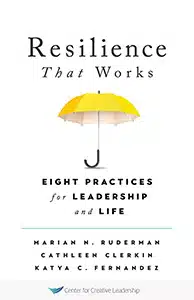Recovery From Overwork: More Hours ≠ More Productivity
Organizations and senior leaders often try to improve profitability and productivity by demanding more — asking people to do more with less — more hours, more projects, more email, and more output. This is more true now than ever.
But always focusing on “more” may be a mistake, as it can lead to overwork and burnout.
After a certain point, additional hours spent working don’t necessarily translate into additional productivity.
A common assumption is that the more hours people work, the more productive they are, and the more profitable the organization will be. At first glance, using hours-worked as a proxy for effectiveness and productivity seems to make sense, because when people are working more hours, the presumption is that they are creating additional value.
The problem is, every additional hour of work doesn’t equate to an increase in productivity, and can instead lead to overwork and ultimately, burnout.
In fact, working too many hours actually impedes productivity, both for individuals who are working too many hours and for their teams, resulting in a substantial decrease in effectiveness. Excess busyness and long hours can actually produce more errors, lead to declines in employee health, and lead people to emphasize reactiveness over proactiveness.
The costs of overwork are there — they’re just hidden. People who work too many hours don’t get enough time to recover. Without enough time to recover from work, the resulting exhaustion impedes productivity, leads to accidents, illness, emotional dysregulation, and mistakes.
The reason behind the diminishing productivity can be explained by what social scientists call the effort-recovery model. This model emphasizes that recovery is essential after a period of extended effort to prevent burnout. Insufficient recovery can result in diminished performance. Rest provides the fuel necessary for hard work and prevents burnout.
Leadership Muscles Need Rest, Too: Recovery Practices for Leaders
With physical fitness, rest is essential for muscles to recover and grow stronger after exercise. Leadership muscles are similar and require opportunities to recover, too.
Companies can help employees step back and pause to prevent overwork. In the process, they can help increase workforce resiliency, boost energy and passion about work, and reduce costs associated with stress, illness, and employee turnover.
There will always be times when you need to pick up the pace of work and ask everyone to sprint. But to prevent burnout, these high activity times need to be balanced with periods of recovery. The key for any organization or individual to be sustainable and competitive over the long term is balance.
That’s why companies would be better served by giving their leaders opportunities to recover from periods of intense work, so their minds can clear and they can recognize what’s most important.
Access Our Webinar!
Watch our webinar, How to Promote Wellbeing at Work, and learn how to build a workplace culture that supports and promotes wellbeing for all employees.
How to Prevent Burnout & Restore Productivity
Now, more than ever, things may feel uncertain and overwhelming, and you may feel tempted (or forced) to respond by overworking. Yet uncertainty can lead to anxiety, and the nonstop additional work is draining and can lead to burnout.
Engaging in recovery behaviors and practices can help prevent burnout. (They can help in dealing with burnout once it’s already happened, too.)
Recovery practices could be taking a day just to be outside in nature, carving out time to reconnect with friends, or even going on a long walk or run to shed the stress of a tough day. Taking some time out for your mental health is critically important.
5 Ways You Can Recover from Overwork
As noted in our white paper, these 5 key research-backed recovery practices can help to prevent burnout, foster resilience, and help you bounce back from overworking.
1. Sleep.
Sufficient sleep is a biological necessity for our physical and mental health. Sleep can also increase your productivity as a leader. Yet polls consistently find that almost half of adults get less than the recommended amount of sleep.
2. Exercise.
Most corporate workers have sedentary jobs — sitting at a desk rather than engaging in physical activity — and this may be bracketed by commutes also spent sitting. Physical activity can boost energy, mood, cognition, and performance. In fact, exercise and leadership effectiveness are closely linked.
3. Mental Recovery.
Being able to stay attentive and focused is critical to high performance. But that’s increasingly difficult with the ever-present notifications from digital devices and workdays that can extend far beyond the traditional workday. Contemplative practices such as meditation can allow your mind to regain focus and clarity. Mindfulness is a simple way to lead better, and mindfulness exercises can train your brain to be better focused, resulting in clearer thinking.
4. Social Recovery.
Humans are social animals. Connecting, caring, and sharing with others can lower stress levels and boost moods. Organizations need to find ways to encourage positive social interactions on the job and outside of work.
5. Gratitude.
Positive emotions can increase energy and creativity. Work cultures are great at identifying the negative, but could be more intentional about identifying good and meaningful experiences at work. Giving thanks can actually make you a better leader, and can enhance mood and wellbeing, too.

Dive deeper into 8 practices that keep you healthy, focused, and functioning with our book, Resilience That Works: Eight Practices for Leadership and Life.
How Organizations Can Prevent Burnout & Foster Resilience
When practiced regularly, these behaviors can help keep employees happy, healthy, and engaged. But simply telling people to get more sleep or exercise more is unlikely to prevent overwork and burnout, foster resilience, or meaningfully change your workforce’s behaviors.
Here are a few things that HR leaders should consider to encourage employees — and managers — to foster resiliency and make time for wellness:
- Educate people about resiliency. Help people understand that there are specific recovery practices and habits that can help them feel better and perform better. Help them connect these behaviors to their health and improved job performance. Create parameters around the use of email, so that people know they aren’t always expected to respond immediately, especially in the middle of the night. Make sure your organizational culture is sleep-friendly.
- Provide resiliency-building opportunities at work. Financial incentives, an onsite gym, or reimbursements for fitness classes can make it more likely employees will exercise. You may want to provide your people with access to formal resilience training.
- Consider contemplative practices. An increasing number of large organizations, from Google to the U.S. Army, are using mindfulness programs to help people learn how to pause and quickly regain focus. Mindfulness programs can be offered a variety of ways, from self-guided online courses to on-site classes. Mindfulness and breathing techniques can be employed at home, at your desk, and even in meetings. For example, you may want to educate your teams that the commonly-shared advice to “take a deep breath” doesn’t actually help with stress; instead, people should focus on lengthening their exhales in order to calm their nervous systems.
In summary, HR leaders and organizations have a key role to play to prevent burnout by supporting their people; minimizing overwork; and helping to educate about, and encourage, recovery practices.
Ready to Take the Next Step?
Support your team in challenging times by providing access to our resilience training solutions, which will help your leaders avoid burnout — and burn bright instead.













